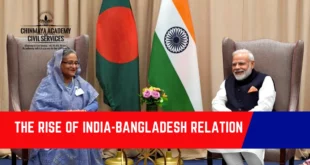Staving off tough competition from priceless Chinese antiques, the crème de la crème of European art and Japan’s own woodblock print masters, the hottest museum tickets in Tokyo currently are to Borderless: the world’s first permanent digital art museum. teamLab, the collective behind the museum, is transforming the very ontology of art, by liberating it from the canvas and altering the relationship between the artwork and its audience. The 500 person-strong group includes coders, mathematicians, architects, sound engineers, animators and musicians. Their medium and method comprise algorithms, light and collaborative brainstorming, rather than the paint, paper and individual inspiration we have come to associate with art. At Borderless, 470 light projectors and 520 customised computers create a dream-like experience of crystal forests, waterfalls of flowers, galleries of holographic samurai pounding drums, and fanciful animals wandering across the walls of the 108,000-odd square foot space. The art works are dynamic, immersive and interactive. At the same time, they remain grounded in a Japanese aesthetic that emphasises impermanence and a reverence for nature.
Since it’s founding in 2001, the digital art collective has established itself globally, with works in the permanent collections of museums including San Francisco’s Asian Art Museum, Melbourne’s National Gallery of Victoria, and Singapore’s National Museum. There remain commercial challenges of how to price artworks that are experiential and that often require a massive display space. Regardless, some of the collective’s pieces have found buyers. In early 2018, teamLab’s “Ever Blossoming Life — Gold” was sold at an auction for $225,000, about 160% above the estimated price. The buyer received a hard disk with the software installed in it, along with a set-up manual. But the million yen question remains. Does digital art indicate an epochal shift, equivalent, for example, to the emergence of abstract art in the early 20th century, or is it a mere amuse-bouche? “Who knows? Only time will tell what history’s verdict will be,” says Mr. Kudo. “Our focus is on the now. On breaking down borders.”
Source : https://www.thehindu.com/todays-paper/tp-international/a-twenty-first-century-art-revolution/article25217757.ece
Check Also
India- Russia Relationship
India and Russia appear eager to reestablish their relations in the modern world. The significant …
 Chinmaya IAS Academy – Current Affairs Chinmaya IAS Academy – Current Affairs
Chinmaya IAS Academy – Current Affairs Chinmaya IAS Academy – Current Affairs



